Last Updated: February 7, 2020 Anil Rana
“Come to the domain of God, where nature’s splendor is vastly unsurpassed and untouched; come to God’s own country – Kerala!”
Kerala is most renowned for its sun kissed beaches, backwater cruises and Ayurveda treatments, but there is another aspect of Kerala, which testifies it as the God’s own country. The wildlife sanctuaries spread over the length and breadth of Kerala provide a perfect opportunity to revel in the glory of the Mother Nature and appreciate the beauty and refined skills of its untamed creatures.
Most of the existing wildlife is endemic to the bio-diverse land of Kerala and their numbers thrive in varying habitats of tropical evergreen to semi-evergreen, moist deciduous to mixed deciduous forests and grasslands.
1. Chinnar Wildlife Sanctuary
“Get delighted with the sight of rare Grizzled Giant Squirrels darting near you!”
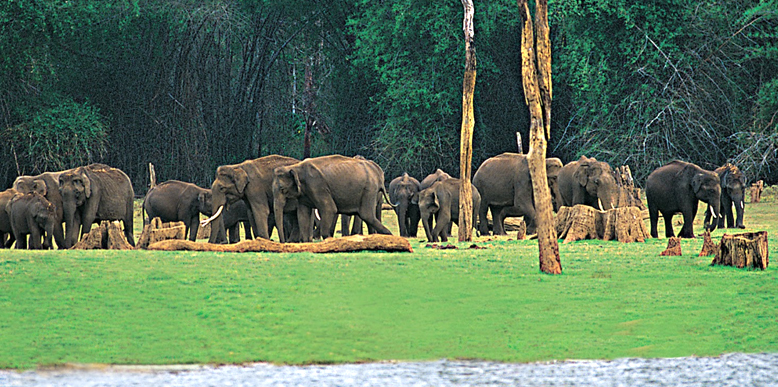
Chinnar Wildlife Sanctuary is located on the State Highway 17 and is 18 km to the north of the Marayoor town in the Idukki district. It covers an area of about 90 sq. km and with 225 (documented) species of birds and is a delight for the birdwatchers.
The major highlight of the sanctuary is the endangered Grizzled Giant Squirrels, which scamper around the dry thorny forest in good numbers. Other species composing the fauna of the park are Spotted Dear, Tiger, Bonnet Macaque, Gaur, Elephants and Nilgiri Tahr. A major population of Mugger Crocodiles of Kerala Dwell in Chinnar, snakes and Indian Star Tortoise make up rest of the reptilian population.
Being situated in the rain shadow region of the Western Ghats, Chinnar Wildlife Sanctuary receives less than two months of rain, annually. So the prominent type of flora is made up of the dry thorny scrubs.
Best time to visit: December to April
2. Eravikulam National Park
“High rolling plateaus covered in lush-green grass and stunted tracts of evergreen forest – Wild Paradise of India!”
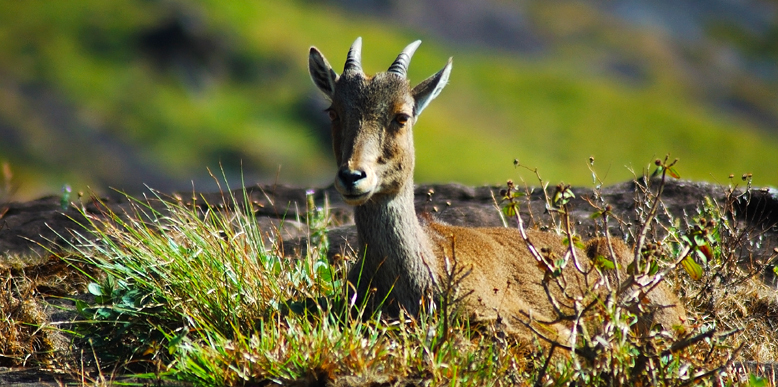
Spread over 100 sq km, Eravikulam National Park is situated in the Idukki district along the Western Ghats. It is at a distance of 13 km from the northeast side of Munnar and provides an abode to the Nilgiri Tahr (an endangered mountain goat).
During the British era, the hunting expeditions brought this friendly and unsuspecting creature onto the verge of extinction. Through the conservation efforts of the Kerala Department of Forests and Wildlife, the species was brought back to a respectable count of 750 (approx.).
Apart from Nilgiri Tahr, around 25 other species of mammals inhabit the Eravikulam National Park including the Tiger, Leopard, Golden Jackal, Indian Muntjac, and less known species like Indian Porcupine, Small Clawed Otter and Nilgiri Langur. Around 132 kinds of birds brighten up the surroundings of the park with their presence.
Best time to visit: April to June and September to November are considered ideal for exploring the park.
3. Kumarakom Bird Sanctuary
“Treat yourself with the colours and music of the nature’s aerial gift to the mankind”
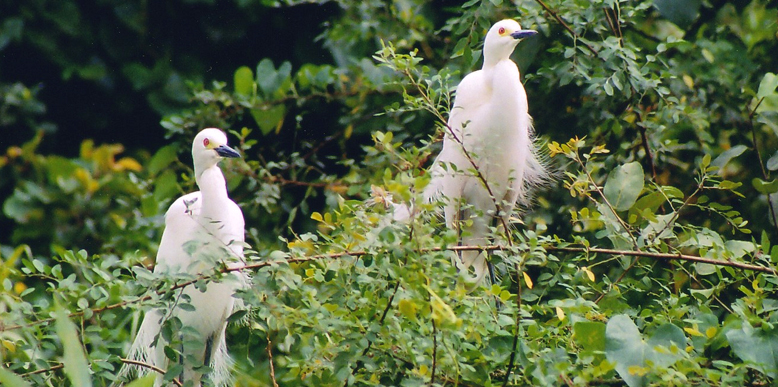
This bird sanctuary is a heaven for all the bird lovers and ornithologists. Besides the fascinating Indian varieties of birds, like egret, cormorant, Brahminy kite, waterfowl and heron, the place is also a cherished haunt of many splendid migratory birds like Siberian Stork, Darter, Teal and Egret.
Kumarakom Bird Sanctuary is also called Vembanad Lake Bird Sanctuary because it is located on the eastern bank of the Vembanad Lake. This Lake is the largest freshwater lake in Kerala and also the longest in India. Many species of coastal and freshwater fishes are found in Vembanad.
Located on an island, one needs a boat to reach it. One can escalate the pleasure derived from bird watching by exploring the park through a cruise over the beautiful Vembanad Lake in a hired motor boat or houseboat.
While planning your wildlife tours to Kerala don’t miss to add this sanctuary into your schedule.
Best time to visit: Period between June and August is considered as a good time to visit, however November to February is the time when most of the migratory birds flock to the sanctuary.
4. Periyar Wildlife Sanctuary
“Come to the land of mesmerising beauty; get thrilled by the roar of the glorious Royal Bengal Tiger and trumpet of the grand Elephants”
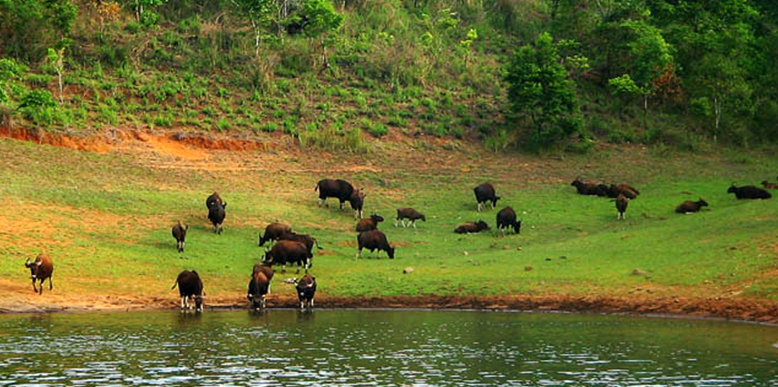
Situated in the Thekkady town, Periyar Wildlife Sanctuary falls in the Idukki and Pathanamthitta districts of Kerala. The Periyar Lake, which was originally built as a water reservoir, is the heart of the sanctuary. The park encircles the 26 sq km lake and provides an opportunity to the visitors to sail around in a boat, admiring the marvelous wonders of the nature, which are gifted all over, abundantly.
South Western Ghats’ Cardamom and Pandalam hills and slopes provide the perfect habitat to the splendid creatures, like the Bengal Tiger, Indian Elephant, Sambar, Gaurs, Malabar Giant Squirrel, Flying Squirrel, Viper, Krait, Woodpecker, Grackle, Kingfisher and many more. The park is also a Tiger reserve, making the mighty Tiger the most significant feature of the park, followed by the wild Asian Elephants.
The park is surrounded by the beautiful plantations of tea, coffee and cardamom, giving the whole atmosphere a magnificent feel to pacify all the disturbed nerves of a human being.
Best time to visit: November to April
5. Silent Valley National Park
“A pristine rainforest and home to the endangered Lion-tailed macaque”
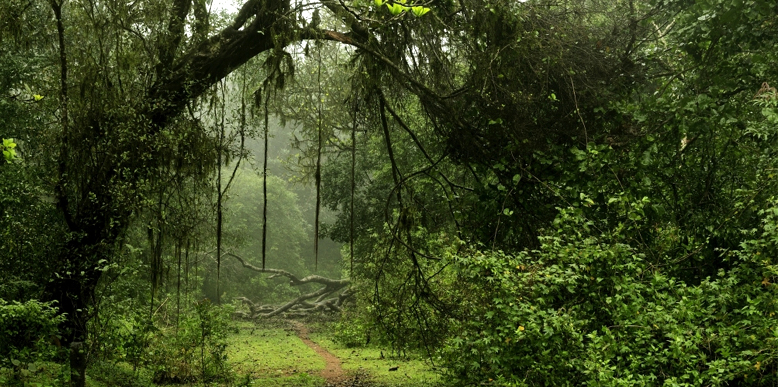
Silent Valley is a 90 sq km of rainforest, which may not rank among the famous wildlife sanctuaries of Kerala but it’s one of the most natural and unspoilt rainforests in the entire subcontinent. The Silent Valley National Park is situated in the Palakkad district and placed over the enchanting Nilgiri Hills.
Lion-tailed macaque is a primate that is endemic to the Western Ghats of South India and Silent Valley provides a habitat to maximum number of these existing wanderoos. Other wild creatures of the valley include- Leopard, Sloth Bear, Malabar Giant Squirrel, Niligiri Langur, Spotted Dear, Mouse Deer and Gaur. Many species of rare and endangered birds, like Malabar Parakeet, Great Indian Hornbill, Grey-headed Bulbul, Pale harrier, Rufous Babbler and Malabar Pied Hornbill also curtail the silence of the Silent Valley.
Best time to visit: November to March
6. Thattekad Bird Sanctuary
“Give wings to your soul and fly with the mesmerizing beauties of sky in the backdrop of the exotic landscapes”
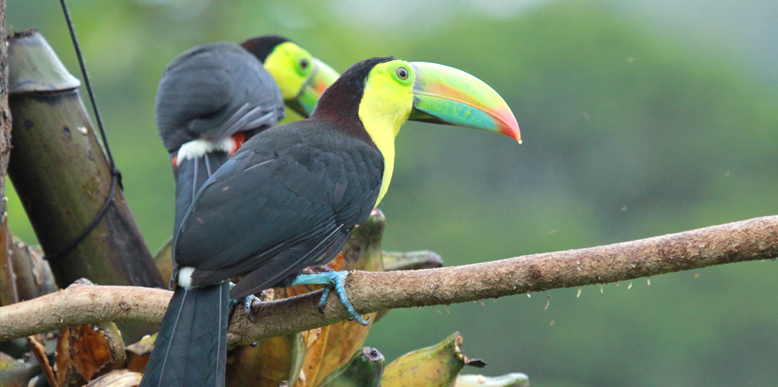
Thattekad Bird Sanctuary is an evergreen low-land forest, situated in the Kothamangalam Taluk of Ernakulam district. Extending in an area of 25 sq km, the park occupies the northern shore of the Periyar River and is the first established bird sanctuary in Kerala.
The picturesque and tranquil environment of the park provides an ideal place for the birds to flourish. A much respected name in the field of Ornithology, Salim Ali, declared the park as the ‘richest bird habitat on peninsular India’.
Numerous species (around 500) of both forest and water birds stay in or visit the park in various seasons, including – Jungle Fowl, Shrike, Sunbird, White-Breasted water hen, Hornbill, Bee-eater, Black Winged Kite and Night Heron. Apart from the birds a few species of mammals and reptiles are also found in the periphery of the Thattekad Bird Sanctuary.
Best time to visit: May and July
7. Wayanad Sanctuary
“Get lucky and spot the world’s largest Bee Eater in Wayanad”
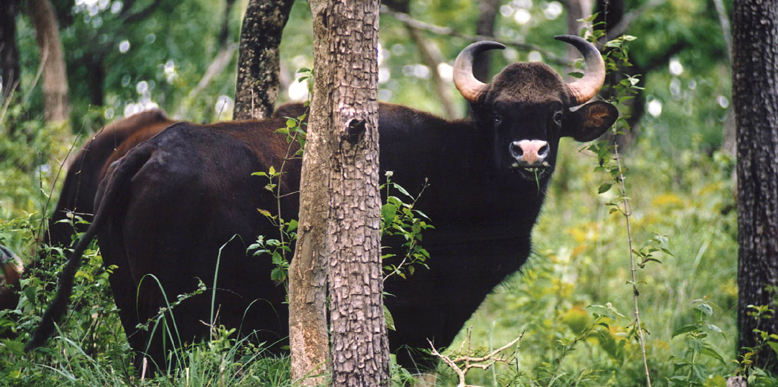
The Wayanad Sanctuary has been divided into two separate wildlife sanctuaries – Muthanga and Tholpetty. The area between south and north portions of Wayanad reserve is now primarily covered by the plantations. Both the reserves occupy 344 sq km (approx) of area.
Founded in 1973, the Wayanad Sanctuary is an important part of the Nilgiri Biosphere Reserve. Moist deciduous and semi-evergreen forest type vegetation provides a suitable lush-green abode to the thriving wildlife of Wayanad.
The Wayanad Sanctuary is recognised under ‘Protect Elephant’ (project) and hence sighting of roaming herds of elephants is not uncommon. Other wild animals dwelling in the park include Tiger, Indian Bison, Monitor Lizards, Wild Dogs, Panthers and Civet Cats. Around 216 species of birds like Black Woodpecker, Babbler, Painted Bush Quail and Pariah Kite can be seen in the park.
Best time to visit: June to October
8. Mangalavanam Bird Sanctuary
“Avifauna abode amid the brick and mortar of modern city”
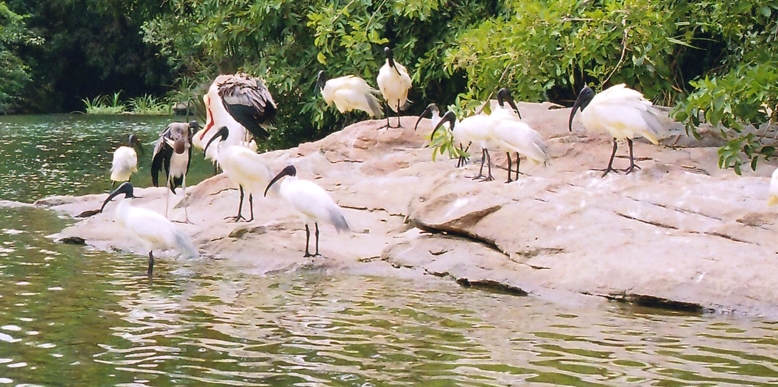
Mangalavanam Bird Sanctuary is an ecologically significant zone in the heart of the city of Kochi. The sanctuary contains a mangrove forest, which provides an abode to various resident and migratory birds (which flock to the reserve in good numbers with every change in the season). The most frequently sighted species of birds are Little Cormorant and Black-crowned Night Heron.
The total area of the park is 2.74 hectare; there is a small pond, which is covered by mangroves by its borders. Mangrove and semi-mangrove vegetation provide shelter to the resident and migrant birds. A few species of the mammals, amphibians and fishes also find their habitat in the bird sanctuary.
Situated right in the middle of a noisy city, Mangalavanam provides a paradise for the feathered creatures that struggle to find space among the concrete jungle created by the man. It is an ideal destination to plan a short wildlife holiday.
Best time to visit: May and June are the months in which maximum numbers of species congregate in the park and thus, an ideal time to plan a tour.
9. Aralam Wildlife Sanctuary
“Meet the wild blooming in their natural habitat”
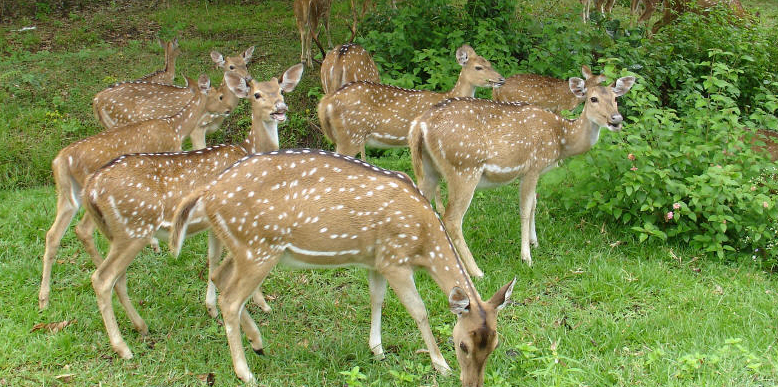
Covering an area of 55 sq km the Aralam Wildlife Sanctuary is located on the western slopes of the Western Ghats. The altitude of the hills varies from 50m to 1145m and a tropical to semi-evergreen forests envelop their surfaces.
Set up in 1984, the Aralam Wildlife Sanctuary is home to various diverse flora and fauna, which are native to the Western Ghats. Aralam is situated in the southeast zone of Kannur District and its wildlife include animals like the Jungle Cats, Bison, Elephants, Boar, Sloth Bear, Sambar, Leopards and different kinds of Squirrels.
Best time to visit: June to October
10. Chimmini Wildlife Sanctuary
“Breathe in nature’s richness and abundance and cherish the diversity of its gifts”
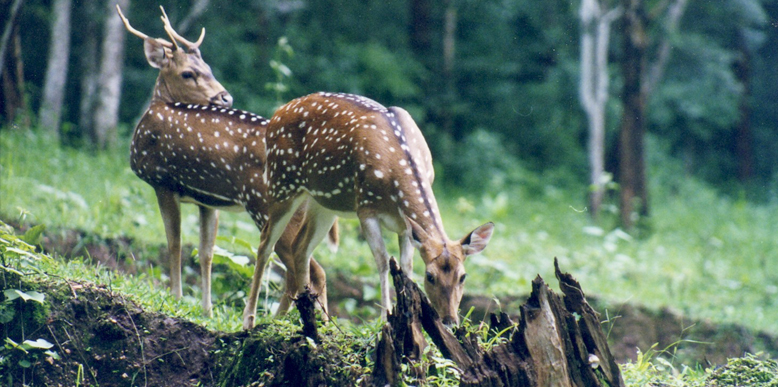
This paradise of the nature boasts of diverse types of forest cover – semi-evergreen, evergreen and moist deciduous. Another alluring aspect of the park is the dam, which is constructed on the River Chimmini that has also led to formation of a beautiful lake.
Located in the Mukundapuram taluk of Thrissur District, the Chimmini Wildlife Sanctuary provides ample opportunities for clubbing a wildlife tour along with the adventure tourism. Trekking and camping in the middle of the lush and serene environment of the park, among the creatures of the wild, promises one of the most thrilling holidays.
Chimmini Wildlife Sanctuary, is spread in an area of 87 sq km and surrounded by two other wildlife sanctuaries at two sides. The rain forest consists of many species of animals including Lion-tailed macaque, Panther, Tiger, Wild Bison, Elephants, Bonnet macaque and Malabar squirrel.
If you are lucky you may also sight two of the largest butterflies of India, Southern Birdwing or Blue Mormon.
Best time to visit: October to March
11. Peechi-Vazhani Wildlife Sanctuary
“Welcome to the second oldest sanctuary of Kerala!”
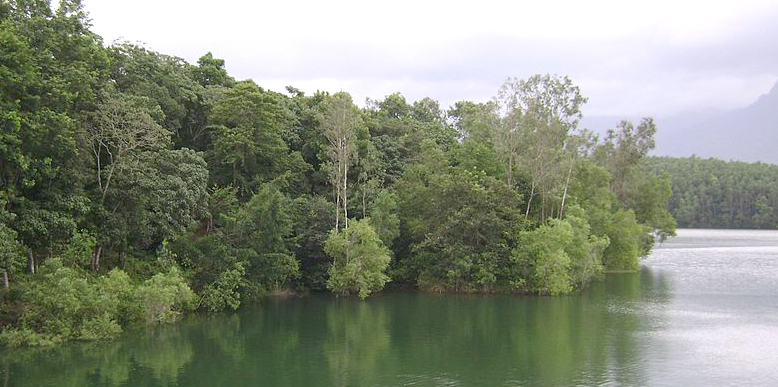
Spread in an area of 125 sq km the Peechi-Vazhani Wildlife Sanctuary was established in 1958 in the catchment part of the Peechi and Vazhani dams. It has a wonderful array of vegetation comprising semi-evergreen, evergreen, moist-deciduous and mixed deciduous types. The nature enthusiasts can take a boat ride in the artificial lake of the sanctuary or trek in the wild while basking in the charm of the picturesque surroundings.
One can spot Sambar Deer, Barking Deer, Bison, Leopard, Elephant, Tiger; more than 100 species of avifauna; and many kinds of lizards and snakes in the park.
Best time to visit: November to April
12. Chenthuruni Wildlife Sanctuary (Shenduruny Wildlife Sanctuary)
“Enjoy the wildlife while discovering the ruins of the Stone Age”
It was established as a wildlife sanctuary in the year 1984 and is divided by the Chenthuruni River, which flows through the forest. The name Shenduruny has been derived from the name of a species of tree, which is endemic to the region. Covering an area of 100 sq km (approx.), Shenduruny Wildlife Sanctuary is about 70 km from the town of Kollam.
The tropical evergreen, semi-evergreen and mixed deciduous vegetation offers an abode to numerous animal species, like the Wild Boar, Bonnet Macaque, Leopard, Tiger, Mouse Deer, Striped Palm Squirrel and Barking Deer. Several sharp and jagged hills embrace the sanctuary and the valleys provide spectacular vistas.
Best time to visit: March to July
13. Idukki Wildlife Sanctuary
“Cruise along the lake nestled amidst the dense evergreen forest of Idukki”
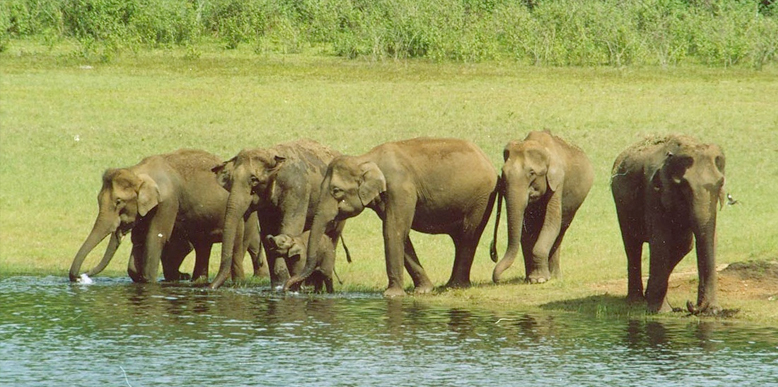
In the Thodupuzha and Udumpanchola talukas of Idukki lies the Idukki Wildlife Sanctuary occupying an area of 77 sq km. Nearby, standing tall at an altitude of 167.68 meters is Asia’s 14th largest arch dam, Idukki Arch Dam, which adds to the thrill of touring a wildlife sanctuary.
Like a jewel in the crown, the tropical evergreen, semi-evergreen and moist-deciduous forest cover of the region is further beautified by the lake, which is also used for the purpose of boating by the tourists. Placed at an elevation of 450 to 750 meters, the Idukki Wildlife Sanctuary offers plenty of enjoyable prospects for trekking.
The animal life of the sanctuary of Idukki includes Tiger, Wild Boar, Sambhar, Elephants, Jungle Cats and Bison. Snake species comprise of Viper, Cobra, Kraits and several non-venomous species. Avifauna encompasses species like Malabar Grey Hornbill, Flycatchers, Grey Jungle Fowl, Woodpecker, Laughing Thrush and Kingfisher.
Best time to visit: December to April
14. Neyyar Wildlife Sanctuary
“Enjoy bountiful of magnificent wild creatures residing in the humble 9.06 sq km space of the Sanctuary”
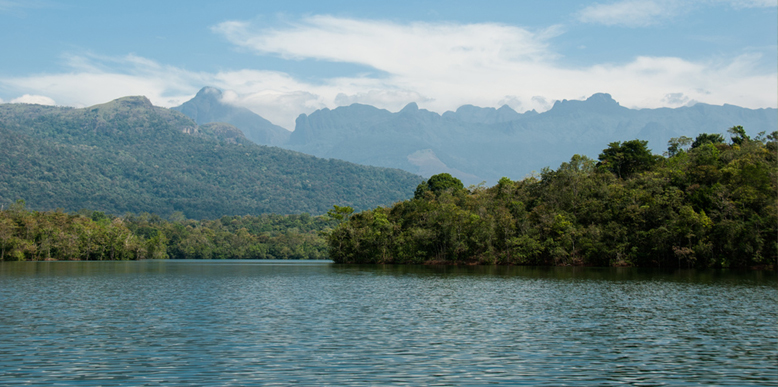
Neyyar Wildlife Sanctuary is located at the Southeast side of the Western Ghats and covers an area of 128 sq km. Situated at a distance of 32 km from Thiruvananthapuram, the sanctuary consists of Neyyer Dam, which is built over the Neyyer River. The lake formed as part of the dam is pristine blue, making the experience of boating over it one of the most exquisite ones. The forest cover displays diversity by varying vegetation from wet Evergreen to Grassland, depending on the elevation of the surface.
The highlights of the park comprise of a Crocodile rearing centre, Deer and Elephant rehabilitation centre and Lion Safari park. Even with an area of 9.06 sq km, a rich variety of mammals, birds, reptiles, amphibians and fishes find their habitat in Neyyar Wildlife Sanctuary.
Best time to visit: October to March
15. Parambikulam Wildlife Sanctuary
“Trek among the picturesque peaks and valleys of the sanctuary and feel the thrill of being among the untamed!”
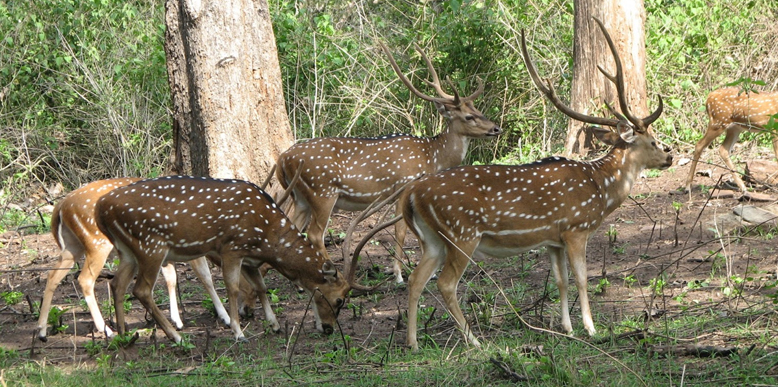
Parambikulam Wildlife Sanctuary is located in the Chittur Taluk of Palakkad district and covers an area of 285 sq km. An interesting feature of the sanctuary is that it consists of three dams – Parambikulam, Thunakadavu and Peruvaripallam.
It is known for having the largest number of Indian Bisons (Gaurs). Other remarkable animals in the Parambikulam Wildlife Sanctuary include Jungle Cats, Tigers, Bonnet Macaques, Spotted Deers, Elephants and Lion-tailed Macaques. Avifauna found here includes Peninsular Bay Owl, Great Black Woodpecker, Grey-headed Fishing Eagle and Lesser Grey-headed Fish Eagle.
The wild populations thrive in the diverse vegetation provided by evergreen, semi-evergreen, moist deciduous, shoal forests and grasslands.
Best time to visit: November to April
You can plan your holidays in Kerala by incorporating various pearls of the Mother Nature, which the state offers, in your itinerary. Kerala prides itself with its beaches, backwaters, Ayurveda, hill stations, pilgrimage sites and wildlife sanctuaries. You can very well choose from among various beautiful locations and experience the sheer happiness and excitement, which the place has to shower.
“For best deals on customized India Travel Holiday Packages call @+91-9212553106/07”
Published: 31 Oct, 2013
As a tour manager at TourMyIndia.com, Anil Rana has helped his clients in exploring the Indian wildlife and cultural heritage. His love for travel has imparted him immense knowledge of Indian wildlife, cultural heritage, leisure destinations. To help travellers all across the world, he loves to pen down his experiences and wisdom about cultural, wildlife and leisure travel in India.



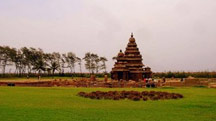 15 Nights / 16 Days
15 Nights / 16 Days 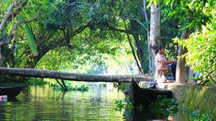 9 Nights / 10 Days
9 Nights / 10 Days 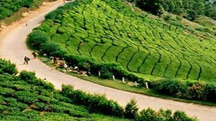 9 Nights / 10 Days
9 Nights / 10 Days 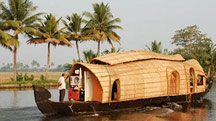 10 Nights / 11 Days
10 Nights / 11 Days 

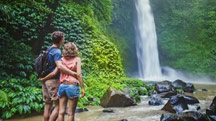 6 Nights / 7 Days
6 Nights / 7 Days 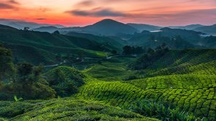 6 Nights / 7 Days
6 Nights / 7 Days 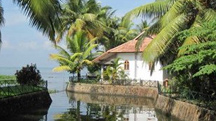 8 Nights / 9 Days
8 Nights / 9 Days  6 Nights / 7 Days
6 Nights / 7 Days 


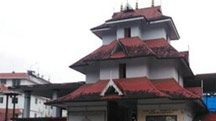 6 Nights / 7 Days
6 Nights / 7 Days  3 Nights / 4 Days
3 Nights / 4 Days  2 Nights / 3 Days
2 Nights / 3 Days  3 Nights / 4 Days
3 Nights / 4 Days 


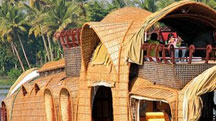 3 Nights / 4 Days
3 Nights / 4 Days 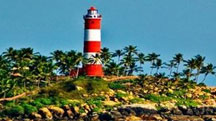 3 Nights / 4 Days
3 Nights / 4 Days 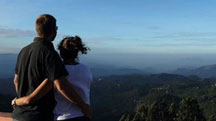 3 Nights / 4 Days
3 Nights / 4 Days 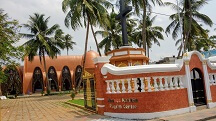 4 Nights / 5 Days
4 Nights / 5 Days 


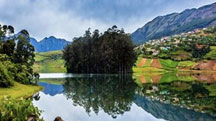 7 Nights / 8 Days
7 Nights / 8 Days  4 Nights / 5 Days
4 Nights / 5 Days 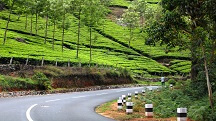 4 Nights / 5 Days
4 Nights / 5 Days 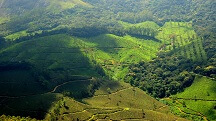 4 Nights / 5 Days
4 Nights / 5 Days 


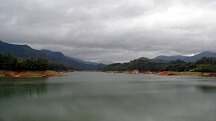 5 Nights / 6 Days
5 Nights / 6 Days 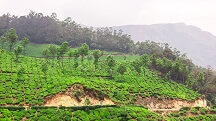 4 Nights / 5 Days
4 Nights / 5 Days 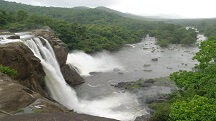 3 Nights / 4 Days
3 Nights / 4 Days 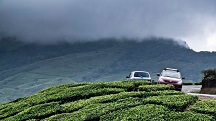 3 Nights / 4 Days
3 Nights / 4 Days 








